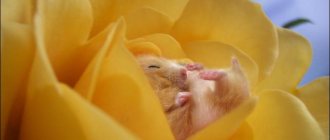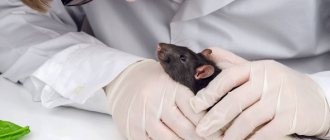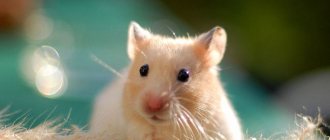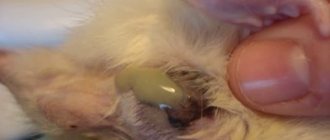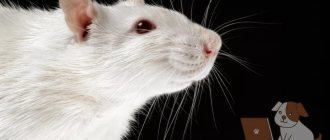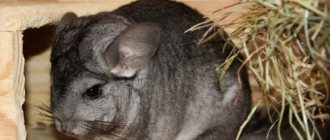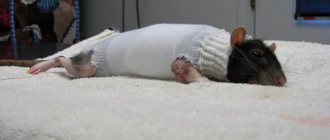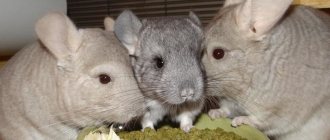A parrot's beak is a unique indicator of health: by its condition one can judge the presence or absence of a disease. The beak serves as the beginning of the digestive system, on which the functioning of all organs in one way or another depends. The article provides a description of possible problems: deformation of the horny plates, delamination, softening, rapid growth and other pathologies.
The structure of a parrot's beak
The beak is an organ made of keratoid tissue that replaces jaws and teeth in birds. Inside the shell there is a bone outgrowth. The oral apparatus of parrots is similar, with the exception of small nuances: size, color of the cere, location of the nasal passages. The organ consists of an upper and lower part, a tendon and a cere with nostrils. Normally, a budgerigar's beak does not peel off. The surface is smooth and shiny. Slight layering is allowed on the sides of the horny structure.
Purpose of the beak:
- capturing and grinding food;
- touch;
- participation in movement;
- communication;
- feeding chicks;
- protection.
A healthy beak is necessary for the normal functioning of birds, but if it peels and cracks, this is not a pathology. The stratum corneum is constantly renewed: it wears off and grows. But if there are obvious signs of a pet’s poor health, it’s worth thinking about why the parrot’s beak is peeling off and growths are forming. This may be the result of some kind of illness, malnutrition, or injury.
When does this happen
This sound appears suddenly and everyone remembers it because of its unfamiliarity, since many perceive it as a creaking, others - a crackling, clicking and the like.
Find out what to do if your parrot is running around the cage and screaming.
The clicking of the beak is most often heard after the bird has eaten, since on the inside of the beak the parrot has teeth with which it chews hard fruits, cleans the husks from grains, and it can get stuck in the teeth. Therefore, after eating or in the evening before going to bed, sitting on a perch, the feathered pet tries to get rid of stuck food residues, thereby making such extraordinary sounds.
You can try to explain the sound being made - it’s as if the bird had filled its mouth with seeds in reserve and now began to click them. But the parrot never does this; he eats near the feeder, removing grains from the shell.
Important! Parrots should not be given chocolate, salt, avocados or alcohol - this is poison for them. https://www.youtube.com/embed/S_aAN8ssntI
Delamination
The beak is a protein structure; Minerals participate in its formation: calcium, zinc, phosphorus. With their deficiency and vitamin deficiency, first of all, the beak changes in appearance. It delaminates and becomes covered with small cracks. Beginners in poultry farming and those who feed their pets only grain often encounter separation.
You can fix the problem by revising your diet. The bird should be given a vitamin complex and sprouted wheat. Don't forget about sepia - a source of minerals. For prevention, eggshell powder, feed yeast, and a little honey are suitable.
Attention! Minor lamination occurs during the molting season. It is quite simple to correct: you need to ensure that there are always branches and stones in the cage for natural sharpening of the beak.
Treatment methods
Recovery therapy directly depends on the cause of the disease. If scabies mites have been diagnosed, then it is necessary to use antiparasitic drugs. If the curvature is observed due to an incorrect diet, then feeding should be urgently adjusted. In case of fractures and cracks, the doctor glues, stitches with wire or grinds down the beak with a file until the process is as close as possible to the natural appearance. If a bird was born with abnormal abnormalities, then it can only be helped with special care and feeding through a pipette. Taking care of your pet is the main aspect in preventing beak problems.
Deformations
Although the beak is very hard and firmly attached, it can become deformed. There is a congenital malformation when a chick is born with an irregularly shaped horn. Most often, such birds do not survive because they do not adapt to grab food. The problem may go away over time if the top and bottom parts close together, otherwise the pet will need special care for the rest of its life.
If a parrot's beak becomes bent at an early age, when the keratoid membrane is pliable, things can still change. When the growth zone is affected, irreversible complications arise. With curved, intersecting halves, shape correction is possible. It is important to see the deformation in time and help the pet. Inexperienced owners do not immediately notice that the parrot’s beak has become crooked. The cause may be an adult bird colliding with an obstacle, for example, hitting glass.
Description
All representatives of various species of the Parrot family have an impressively strong beak. This is the main tool with which a bird obtains food for itself, grinds it, builds a nest, takes care of its own plumage, and even fights off in case of an enemy attack. Ornithologists believe that it is not only a tactile organ (that is, a kind of “third hand”), but also a “third leg” that helps to move along vertical surfaces, such as wood.
The beak of a parrot reminds anyone with any knowledge of zoology of the teeth of rodents. They are also constantly growing, and the animal is forced to grind them down, crushing almost everything in its path. So our bird needs to gnaw either perches, or tree branches brought by the owner, and then, if it happens, parts of the apartment interior. Otherwise, the beak will lengthen so much that the bird will not be able to feed normally.
What does an overgrown beak look like?
It is known that this organ, in its chemical composition, is formed from keratinized rough tissue, and its growth, first of all, depends on the diet provided to the bird. If there are too many minerals in grain mixtures and supplementary foods, the body part in question will lengthen faster than it should. In this case, the owner just needs to reconsider the menu of his feathered friend, perhaps place a special sharpening stone in the cage, and the problem will be solved.
However, it happens that these measures are not enough. And that's why.
Fractures and injuries
With severe bruises, cracks and chips appear on the horny tissue. The plates are split and the jaw bones are displaced. Where blood circulation is impaired, you can see that the beak has darkened. Less commonly, partial tearing of the organ occurs. Parrots, which contain several individuals in one cage, sometimes fight for territory. Violently attacking each other, the rivals inflict serious injuries and damage on each other. One of the most serious consequences of a fight is the tearing of the beak.
If the wound is relatively small, the veterinarian seals the crack with special glue and secures it with wire. Over time, a stratum corneum will grow in place of the broken part. But with a longitudinal fracture, a lot of effort is required to restore the functions of the beak and avoid tissue necrosis. It is difficult to leave a bird with such an injury, because you will have to feed it soft food for a very long time, while protecting it from unnecessary activity.
Sprawl
The growth of horny plates is affected, first of all, by the lack of hard material. In nature, parrots move freely, tugging at twigs and sorting through stones. They walk along tree rhizomes and climb trunks. The beak and claws wear down naturally. At home, birds are deprived of this opportunity. Smooth cage bars and plastic perches do not contribute to beak shortening.
Other reasons for the rapid regrowth of plates:
- excess macronutrients;
- slow metabolism;
- abundance of fats in the feed;
- infections;
- diseases of internal organs;
- hormonal disbalance.
Due to increased growth of the beak, feeding problems may arise: the long part will interfere with taking food. The bird won't even be able to scratch itself normally. Of course, the pet will try to adapt to the current situation, but it will lose its usual comfort.
The owner should contact a veterinarian. You can try to trim the keratoid plate yourself, just so that the parrot’s beak does not crack. The manipulation is carried out with a nail clipper, having previously marked the place of shortening.
Attention! A sharp instrument must be handled carefully so as not to touch blood vessels. If blood does flow, it is stopped with a solution of hydrogen peroxide.
Internal
Now let's consider the internal structure of a feathered friend, because basically all vital processes take place inside, if they stopped, the bird would not be able to exist. A parrot has 46 chromosomes, just like humans.
Voice apparatus
They have an amazing vocal apparatus, thanks to which they can reproduce various sounds, including human speech.
Birds remember sounds and, with the help of a special structure of the vocal apparatus, are able to reproduce them, as well as produce beautiful singing. They have four modulators, while humans have only one.
Respiratory system
The respiratory system allowed oxygen to enter the bloodstream. Due to the high metabolic rate required for flight, birds experience an increased need for oxygen. The development of an efficient respiratory system allowed the evolution of flight. Birds ventilate their lungs using air sacs. Air sacs can account for up to one-fifth of the body's volume!
They breathe through their nostrils, which are located at the top of the upper beak. From their nostrils, air enters a series of nasal cavities, where the air is cleared of dust and particulate matter. From the nasal cavities, air then passes through the trachea to the syrinx, where the air flow is divided into two parts. Instead of going directly into the lungs, the air first enters the air sacs. It takes two inhalation/exhalation cycles for the air to completely pass through the air sacs and lungs.
The cardiovascular system
The cardiovascular system is responsible for delivering oxygen to the body's cells and also plays an important role in maintaining body temperature. The parrot's circulatory system consists of the heart plus all the vessels used to transport blood (arteries, veins, capillaries).
Like mammals, the heart has four chambers, two atria and two ventricles, which act as two separate pumps. After passing through the body, the blood is pumped under high pressure to the lungs. Upon returning from the lungs, it is pumped under high pressure into the body.
Digestive system
The feathered fellow has some unusual features that help him quickly process food. Birds have high energy demands and therefore need to digest their food very efficiently.
Birds' mouths are very different from ours, and they don't chew like we do. There are no teeth and there is no saliva in the mouth. When they eat, they use their beaks to open seeds, nuts and fruits.
The internal parts of digestion are the liver, gall bladder, intestines, pancreas, stomach and goiter.
Nervous system
The nervous system consists of the brain, spinal cord, and nerves that run throughout the body. Main functions of the nervous system:
- Coordinate body actions by transmitting signals;
- Provide sensory information about the internal and external environment;
- Store information as memory.
Excretory system
Chemical digestion of birds and absorption of nutrients occurs in the small intestine. The small intestine of birds receives bile from the liver and digestive enzymes from the pancreas, which help in this process.
The remaining materials then pass through the colon, which consists of a short colon. Finally, the gastrointestinal tract ends at the cloaca, where fecal and urinary material is collected before it is excreted through the anus.
The urinary system is the body's waste removal system. The main function of the kidneys is to process and remove waste from the blood.
Reproductive system
The genital organs of birds are not particularly developed. Males lack a penis. In order to transfer the ejaculate to the female, the male climbs on his back, the holes are compressed, since the male does not have a penis.
Once intercourse is complete, the sperm travels up the oviduct to the egg, where fertilization occurs. The fertilized egg connects to the yolk sac, both return down the oviduct to an area where a membrane forms around them, and are then expelled through the opening of the locula.
Knemidocoptosis
If the beak turns black or grows back, this is not the worst thing that can happen to a parrot. It is much worse if the bird becomes infected with parasites. These microscopic mites of the genus Knemidocoptes infect non-feathered areas of the body: paws, wax, area around the eyes. Pests live in the epidermis and feed on skin flakes. Their movements and waste products cause severe itching. Ticks are not visible during normal examination, but their presence is indicated by the following symptoms:
- the bird itches intensely and pecks its paws;
- growths appear on the wax;
- crusts accumulate around the eyes;
- plaque on the beak.
In the advanced stage of the disease, the mites move to the beak, it peels off, and its structure is destroyed. Due to the abundance of internal channels, it becomes loose and porous. Getting rid of scabies mites is not easy, you need a systematic approach. To begin with, the bird is isolated from other pets. Disinfect the cage and change all equipment. Aversectin ointment or Vaseline oil is applied daily to the skin and keratinized surface. The course of treatment is from two weeks to a month.
Skeleton
The skeleton of birds is adapted for flight. For example, there are many hollow bones, which makes the bodies lighter. This, combined with the fact that many of the bones are fused and cannot bend, makes her skeletal system strong enough to withstand the stresses of takeoff, flight, and landing.
In contrast to the rigidity of the skeleton, the neck is extremely mobile. This allows the animal to see danger from any direction and also allows it to preen its plumage. The flexibility of birds is increased due to the large number of cervical vertebrae. Ten cervical vertebrae. Birds have the ability to turn their heads almost 180 degrees!
Most birds have approximately 175 different muscles.
Next
Useful Why did the parrot stop flying and how to fix the situation
Softening
Another trouble that can happen to a parrot is a softening of the beak. This occurs when there is a lack of calcium and B vitamins. In addition, the stratum corneum softens under the influence of fungi or due to infections - viral, bacterial. Tissues become brittle and mobile. The bird protects its beak and cannot peck grain or care for its feathers. This condition is dangerous due to the presence of microcracks into which food gets, decomposes and serves as a source of infection.
Hypovitaminosis is corrected with the help of veterinary drugs: Gamavit, Beaphar (Beafar), Vinka (Vinka). If the defect appears due to an infectious disease, diagnosis and treatment are carried out by a veterinarian.
Attention! Until the beak gets stronger, the parrot needs to be given semi-liquid, crushed foods. Cracks should be treated with medicine, after removing food particles.
Prevention
It is quite possible that an attempt to trim a budgerigar's beak will be unsuccessful. Having had a negative experience, you are unlikely to want to return to this process in the future. The parrot itself is capable of limiting the length of the horny growth, obeying natural instinct, but for this it needs to create all the conditions. You can avoid forced circumcision by turning to proven methods:
- fix a mineral stone in the cage, which the bird will peck, erasing the stratum corneum;
- regularly add oat grains to the food; their coarse husks polish the beak quite well;
- offer your pet freshly cut twigs so that he can gnaw and peel off the bark;
- adjust nutrition: remove fertilizing, increase the amount of raw vegetables.
The beak compensates for the parrot's lack of arms and teeth, which is why it is so important to monitor its condition. A beak that is too long and a beak that is cut too short are two extremes that should be avoided. It is not so difficult to reduce the length without radical measures, but there are also ways for advanced cases. Just don’t be afraid to help the bird - it trusts you and expects care.

